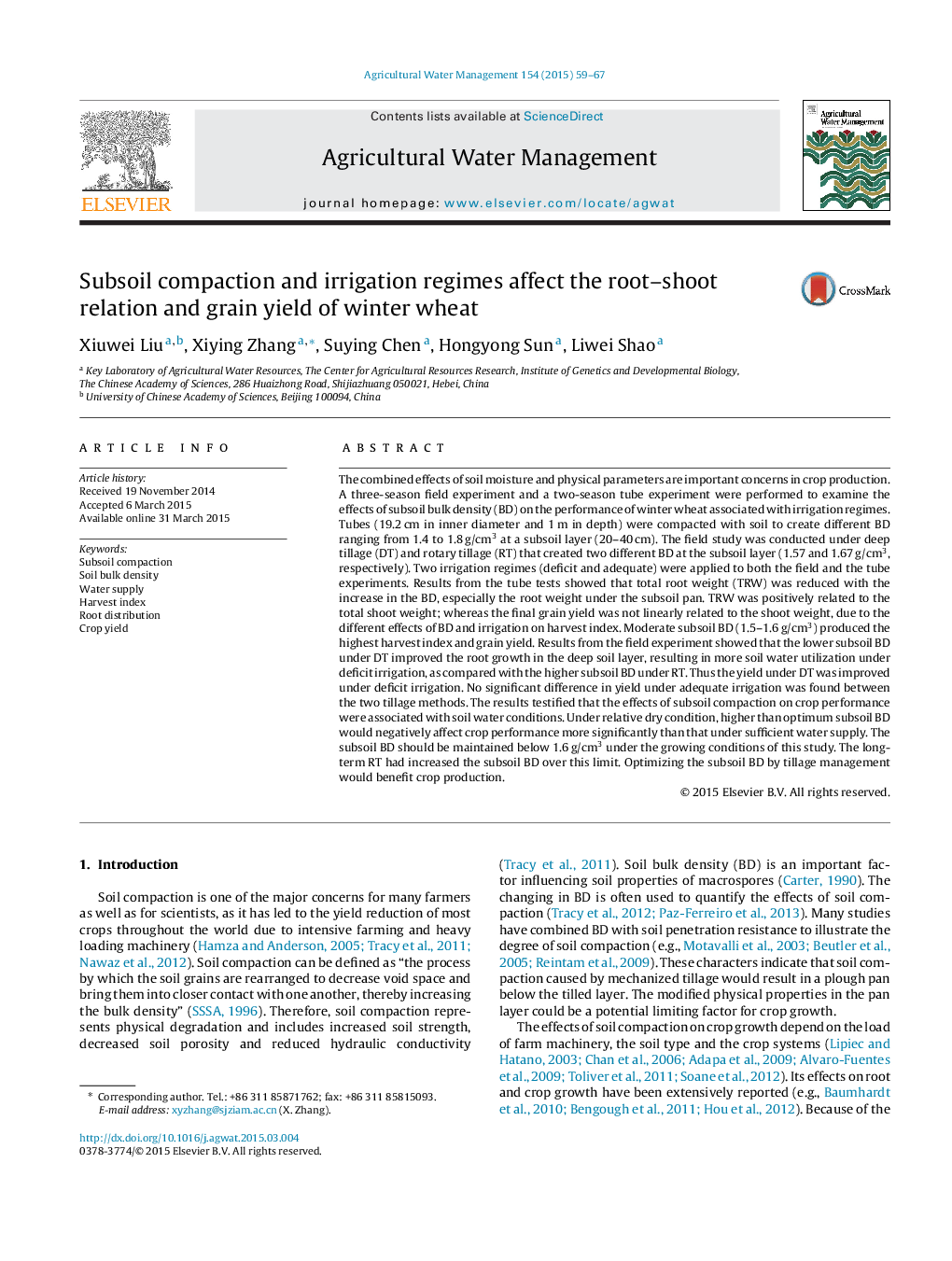| Article ID | Journal | Published Year | Pages | File Type |
|---|---|---|---|---|
| 4478464 | Agricultural Water Management | 2015 | 9 Pages |
•Root weight under the subsoil pan was reduced with the increase in the subsoil BD.•Effects of subsoil BD on crop performance were related to soil water condition.•The highest yield and water use efficiency were achieved at 1.5–1.6 g/cm3.•The long-term RT had increased the subsoil BD over this limit.•Deep tillage can improve the crop performance under deficit water conditions.
The combined effects of soil moisture and physical parameters are important concerns in crop production. A three-season field experiment and a two-season tube experiment were performed to examine the effects of subsoil bulk density (BD) on the performance of winter wheat associated with irrigation regimes. Tubes (19.2 cm in inner diameter and 1 m in depth) were compacted with soil to create different BD ranging from 1.4 to 1.8 g/cm3 at a subsoil layer (20–40 cm). The field study was conducted under deep tillage (DT) and rotary tillage (RT) that created two different BD at the subsoil layer (1.57 and 1.67 g/cm3, respectively). Two irrigation regimes (deficit and adequate) were applied to both the field and the tube experiments. Results from the tube tests showed that total root weight (TRW) was reduced with the increase in the BD, especially the root weight under the subsoil pan. TRW was positively related to the total shoot weight; whereas the final grain yield was not linearly related to the shoot weight, due to the different effects of BD and irrigation on harvest index. Moderate subsoil BD (1.5–1.6 g/cm3) produced the highest harvest index and grain yield. Results from the field experiment showed that the lower subsoil BD under DT improved the root growth in the deep soil layer, resulting in more soil water utilization under deficit irrigation, as compared with the higher subsoil BD under RT. Thus the yield under DT was improved under deficit irrigation. No significant difference in yield under adequate irrigation was found between the two tillage methods. The results testified that the effects of subsoil compaction on crop performance were associated with soil water conditions. Under relative dry condition, higher than optimum subsoil BD would negatively affect crop performance more significantly than that under sufficient water supply. The subsoil BD should be maintained below 1.6 g/cm3 under the growing conditions of this study. The long-term RT had increased the subsoil BD over this limit. Optimizing the subsoil BD by tillage management would benefit crop production.
